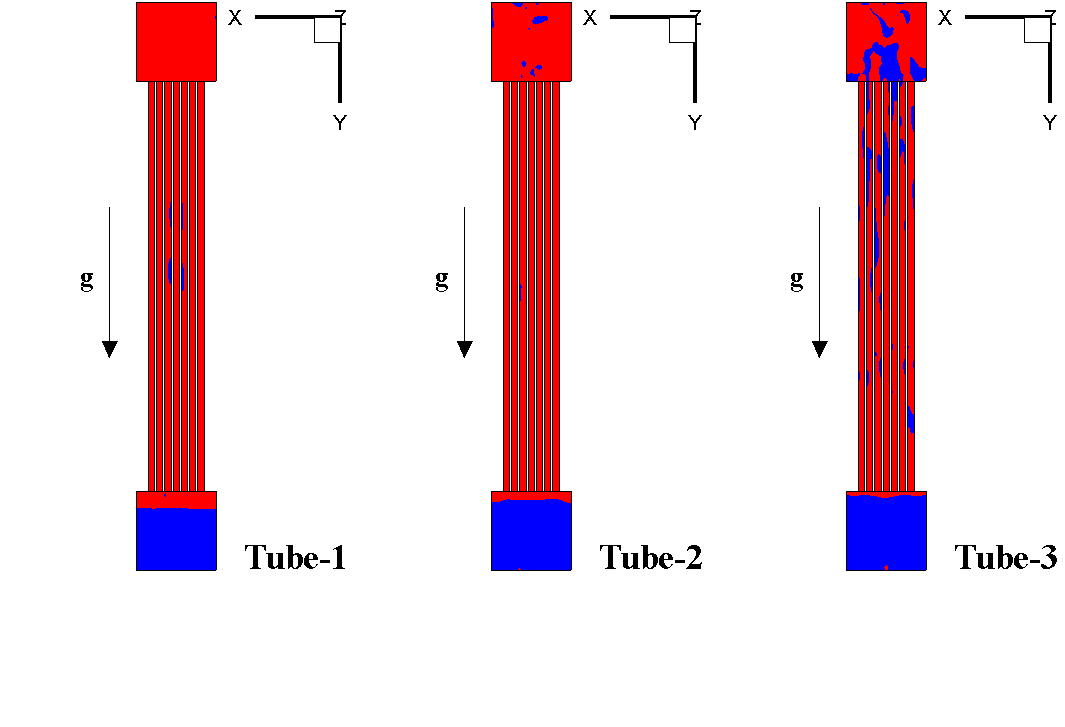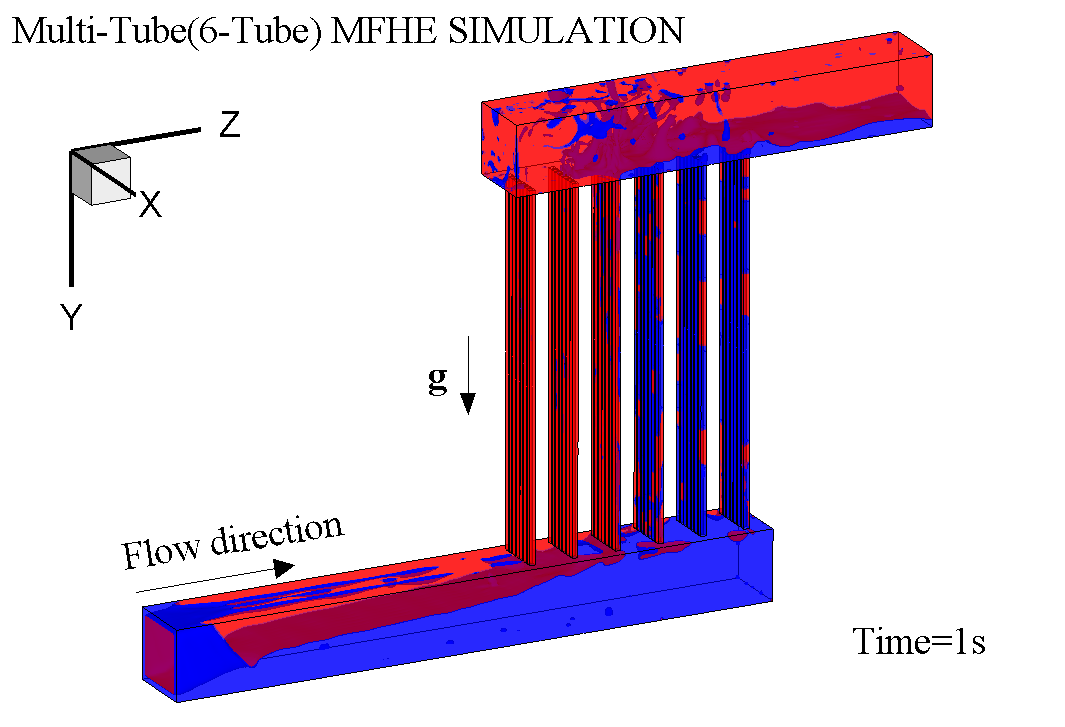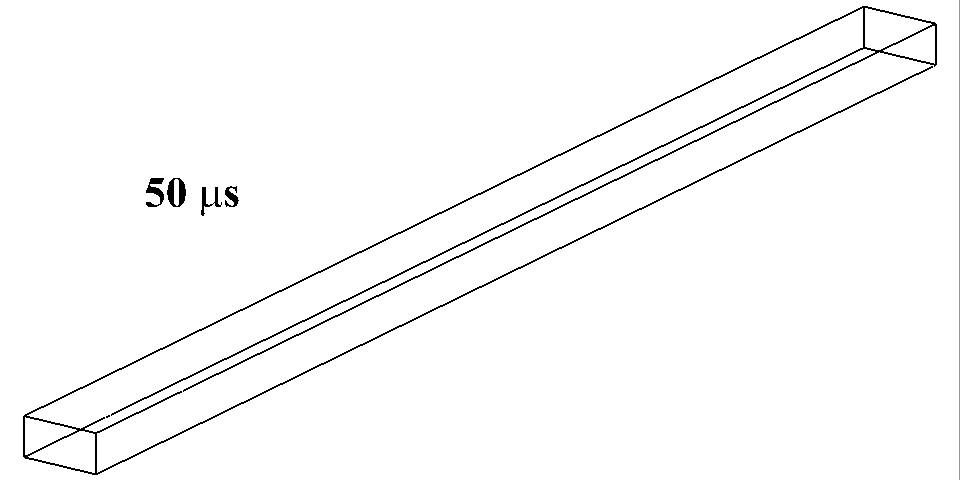Research Topics
▶ Integrated e-powertrain Module
▶ Oil-cooled thermal management system for e-powertrain




▶ ETFC-CFD 연계 Multi-fidelity 척 프로브 유로 설계



▶ MagnetoHydroDynamics(MHD)



The liquid metal is electrically conducting fluid and has large thermal conductivity. When the liquid metal is flowing under the electromagnetic(EM) field, the electrical current is induced. Then the electro-magnetic force called Lorentz force is applied to the liquid due to the interaction between the induced current and the external EM field.
Now, we study the natural convection of liquid metal and the square duct flow under the uniform magnetic field. The coupled equations for the hydrodynamics, electromagnetism, and heat transfer are solved numerically to find the transient or steady-state flow and temperature distribution for the various fluid properties, magnetic field.

▶ Induction channel furnace



Induction channel furnace consists of a nonconductive crucible holding the melted metal, and channel-type inductor with a laminated core for heating the metal. The liquid metal is electrically conducting fluid that interact with the electromagnetic field from the inductor. We conducted numerical simulation of the three-dimensional flow of liquid metal under the AC magnetic field. The conservation equations for solving the flow field is coupled with the electromagnetism equations. In this study, we investigated the heating mechanism in the furnace.
▶ Aircore vortex phenomenon



An aircore vortex is generated during draining after stirring a rotating cylindrical tank or after filling it with liquid. The formation of the aircore vortex and the time of its formation are dependent on drain conditions such as the dimensions of the tank, the initial rotation or stirring speed, and the shape of the drain port.
The vertical vortex spinning about the tank axis in the center, and the Taylor vortex rotating about the circumferential axis. The Taylor vortex was randomly distributed on the axial planes, and its toroidal shape was represented by iso-vorticity surfaces.
▶ Continuous Casting Mold Flow Analysis


Continuous Casting
Mold Process
Middle
width


Broad
width
Continuous Casting
Mold without EMBR
Continuous Casting
Mold with EMBR
In the mold of the continuous casting process, molten steel flow field effects on heat transfer to the solidifying shell and powder entrainment near the top surface. Nowadays, Electromagnetic brake (EMBR) is used to control the flow and improve the quality of the steel product. When steel jet released from the submerged entry nozzle (SEN) flows under imposed electromagnetic field made by EMBR, the electrical current is induced. Then a electromagnetic force is generated in the opposite direction of the flow and the force suppresses velocity of the flow due to the interaction between the current and the electromagnetic field. Because of the important issue of the phenomena in the mold with EMBR, we study on the coupled physics solved numerically.
▶ Distribution of two-phase Refrigerant

In refrigerant cycle, refrigerant passes through compressor, condenser, expansion valve and evaporator. When refrigerant that come from expansion valve enters to evaporator, evaporator inlet condition is two-phase flow. Since evaporator requires uniform distribution in each tube to maximize heat transfer area, two-phase distribution is very important issue in light of evaporator efficiency. In the header, two-phase flow has very complicated motion. So we study the two-phase flow distribution in evaporator using numerical analysis and can observe liquid and gas phase motion in the header.



▶ Boiling Heat transfer



Boiling is a complex process in which mass, momentum, and heat transfer involving a solid wall, liquid, and vapor are coupled. Nucleate boiling occurs on a solid wall at low superheat, and is an efficient mode of heat transfer because the bubble growing and detaching induce considerable fluid mixing near the wall. It has useful application in many areas such as refrigeration, power generation, chemical processing and nuclear reactors.
We study a three-dimensional boiling flow in a rectangular micro-channel with constant heat flux condition. To observe the growing and separation of vapor from the heated wall, the Volume Of Fluid method with phase change modeling is used. When the liquid temperature is higher than the saturated temperature, the bubbles are formed on the wall . They move in the streamwise direction. The motion and shape, distribution of vapor bubbles are dependent on the heat flux, contact angle and mass flux of liquid phase.
